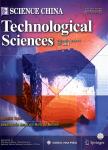Influence of heating parameters on properties of the Al-Si coating applied to hot stamping
Influence of heating parameters on properties of the Al-Si coating applied to hot stamping作者机构:College of Materia&Science and EngineeringHuazhong University of Science and TechnologyWuhan 430074China State Key Laboratory of Material Processing and Die&Mould TechnologyHuazhong University of Science and TechnologyWuhan 430074China
出 版 物:《Science China(Technological Sciences)》 (中国科学(技术科学英文版))
年 卷 期:2017年第60卷第7期
页 面:1088-1102页
核心收录:
学科分类:0810[工学-信息与通信工程] 080503[工学-材料加工工程] 08[工学] 0805[工学-材料科学与工程(可授工学、理学学位)] 0802[工学-机械工程] 0702[理学-物理学] 0812[工学-计算机科学与技术(可授工学、理学学位)] 080201[工学-机械制造及其自动化]
基 金:supported by the National Natural Science Foundation of China(Grant Nos.51275185 51405171 U1564203)
主 题:Al Si coating heating parameters thermal simulator Kirkendall voids cracks 3D surface topography
摘 要:The Al-Si coating of ultra-high strength steel has been applied to hot stamping more and more widely, owing to solving the problem of oxidation and decarburization. However, the evolution of Al-Si coating during the heating process was rarely studied in the previous study. The tests about the influence of heating parameters, such as heating temperature, heating rates and dwell time, on properties of the Al-Si coating were carried out on the Gleeble-3500 thermal simulator. The properties of the Al-Si coating, for instance, volume fraction of FeAl intermetallics, α-Fe layer as well as porosity and 3D surface topography, were explored in the study. Results showed that more and more Kirkendall voids and cracks appeared in the Al-Si coating when the heating temperature exceeded 600°C. The heating rates almost had no influence on properties of the Al-Si coating when the temperature was equal to or lower than 500°C. The volume fraction of FeAl intermetallics in the coating with dwell time from 3 s to 8 min at 930°C was0, 6.19%, 17.03% and 20.65%, separately. The volume fraction of the α-Fe layer in the coating changed from zero to 31.52%with the prolonged dwell time. The porosity of the coating ranged from 0.51% to 4.98% with the extension of dwell time. The unsmooth degree of the surface of the coating rose gradually with the increasing of heating rates and the extension of dwell *** 3D surface topography of the coating was determined by the comprehensive effect of atoms diffusion, new formed phases,surface tension and the degree of oxidation of the coating surface. Experiments indicated that rapid heating was not suitable for the coating when the temperature exceeded 500°C. Experiments also demonstrated that enough dwell time was essential to obtain the superior properties of the coating.



